New perk! Get after it with local recommendations just for you. Discover nearby events, routes out your door, and hidden gems when you sign up for the Local Running Drop.
When professional triathlete Cameron Wurf (AUS) busted out the bike leg at Ironman Texas in 3:53:32 in April with an average speed of 28.7 mph, he trimmed 61 seconds off the previous fastest Ironman bike split to set a new world record. He then ran his way to a 2:50 marathon to finish the race.
While his speed on two wheels was impressive, to say the least, what is truly remarkable was his herculean carb intake, roughly 200 grams each hour he was on the bike – a sky-high amount that he largely credits with helping him turn out a blistering bike leg. Undeniably, it was a digestive feat worthy of Guinness consideration. This bonkers carb intake is just another example of a pro endurance athlete pushing the carb ceiling higher and higher. There must be a limit, right?
It’s almost laughable to think that we sports nutritionists used to advise consuming no more than 60 grams of carbs an hour, enough to provide the necessary boost without the gut bomb. Now, many endurance athletes are taking in far more carbohydrates per hour than was previously considered the norm, and the race paces and world record results seem to speak for themselves. Pro cyclists credit going carb crazy with being able to pound out higher watts for longer, and the biggest names in marathon and ultra-running are using more carbs to crush course records. These days, if you are going to compete, you better have your digestive system ready for a carb onslaught.
According to sports dietitian Alex Larson, host of the Endurance Eats podcast, there are a few reasons why high-carb fueling has become a trend in athletic circles. For starters, she says there is a growing body of research showing that athletes can tolerate and benefit from higher carbohydrate intakes for exercise lasting longer than three hours.
For decades, athletes were told they should limit their hourly carb intake to 30 to 60 grams per hour of activity. That would be enough of this macro to prevent premature fatigue while also limiting the risk for performance-sapping gastro woes, including bloating, nausea, and diarrhea. However, professional endurance athletes and their coaches are typically not ones to be complacent and are seemingly always hunting for any nutrition and training technique to provide an edge. This is where the hunger for more carbs surfaced.
“Pro-level athletes, especially cyclists and triathletes, have been pushing the 90-120+ grams of carbs per hour and seeing performance gains,” notes Larson. And, remarkably, without any reported increase in digestive issues. This highlights the fact that racing long distances at a rapid pace is now as much an eating event as it is an athletic one.
This is an area where sports nutrition research is currently playing catch-up with what elite athletes are doing to reach new performance standards. To be clear, going higher carb won’t itself turn any of us into a hero athlete, but it could make a difference with respect to metrics like finishing time and race pace. How it accomplishes this comes down to giving your working muscles a bigger supply of their preferred fuel.
“High-carb fueling helps maintain stable blood sugar and spares muscle glycogen stores, allowing athletes to push harder for longer,” Larson says. “As a result, this delays fatigue and reduces an athlete’s rate of perceived exertion.” Essentially, what Larson is getting at here is that upscaling your carbs can help you churn out more power for longer before you need to start reducing your effort. There is more available fuel to stoke the engine.
There is also the possibility that bringing more carbs on board can help improve recovery. If you don’t go so low during a workout then it’s easier to bounce back. This can be especially important for times when the duration between intense workouts is small, such as in the case of a multi-day race.
Section dividerMega-carb intake considerations for triathletes
Before you decide you want to embrace the mega-carb trend to crush the competition, there are a few important things you need to keep in mind.
1. Make it count
Certainly, not every type of workout requires such a high level of carb consumption. “The most beneficial time to take in more carbs will be for higher intensity and longer duration exercise, such as 2 to 3-plus hour training sessions, brick workouts, race simulations, and race day,” says Larson, “especially for 70.3 and full-distance Ironman events.”
It’s about optimizing performance when you are pushing yourself very hard instead of simply fueling more modest workouts that require fewer exogenous carbs. Remember that certain environmental conditions, like wind drag and humidity, require you to put in a greater effort to keep up the pace, which can require you to bring in more carbs to lend an assist.
2. Be realistic
It might be hard to hear, but if you are a weekend warrior, then the usefulness of going very high carb is less for you. “For the higher-level athletes that are generating a high amount of power, it requires a high amount of fuel to perform at that level,” Larson explains. The volume of carbs should be paired with the amount of energy being burned. Fitter athletes who are going harder will burn more calories, necessitating a need to supply more carbs to keep the engine going. This is why the pros seem to be trying to out-duel each other for who can suck back more carbs when charging hard, and the reason why professional consumption is so much higher than in age groupers. I would imagine that methods are being sorted out at this very moment to better personalize carbohydrate intake for athletes during exercise based on actual testing.
3. Train your gut
“Just like we need to gradually adapt our muscles in training, the gut is no different,” says Larson. “Athletes will need to gradually build up a tolerance to consuming this level of carbs and fluids during exercise.” This is now what is being called “gut training.” Try to take in 100 grams of carbs per hour of activity without first working your way up to this lofty amount, and you face the real possibility of gastro revolt. “I love rushing into the woods to drop my pants,” said nobody.
Larson explains that there’s no specific gut training protocol for triathletes as it’s a highly individualized process. Some need to go up in smaller, more gradual increments, while other endurance athletes can get to their higher carb goal in just a couple of steps. It’s important to practice going higher carb in conditions such as exercise intensity and weather that will mimic race day where you’ll be relying on this fueling strategy to get you to the finish line.
Section dividerDrinking your carbs
As for what to train your gut with, Larson believes liquid carbs in hydration mixes tend to be better tolerated than more solid carb-based fuel. Trying to nail 100 grams of carbs with just bars and gels may not work out well for many athletes. If you find you are still having gut issues, look at the composition of the drinks and other sports nutrition products you are using and perhaps try different options.
As Larson explains, the sports nutrition industry has expanded with many fuel options that taste better and make it easier to hit those lofty carb targets realistically without GI distress. Leading the charge for this carb mania are sports drink mixes. These newfangled formulations are supplying levels of carbs that make what is in a bottle of gas station Gatorade look rather pedestrian.
The original purpose of the 4-8% carbohydrate solution guideline was to prevent slowing of gastric emptying, which leads to GI distress. But modern studies are demonstrating that sports drink solutions made with multiple carbohydrate sources (i.e., maltodextrin and fructose) increase gastric emptying and allow much higher than an 8% carbohydrate solution without bringing on additional GI issues. What does all this mean? Consuming a drink mix with a multisource carbohydrate solution allows you to absorb more energy faster for better performance. “A 2:1 to 1:0.8 glucose-to-fructose ratio blend has been shown to optimize absorption and reduce GI distress,” Larson says.
When using a high-carb sports drink, it can also be helpful to take larger pulls from your bottle. According to some research, consuming a larger volume of carbohydrates (consuming a bolus) at once will stimulate better gastric emptying and make more carbohydrates available for intestinal absorption than what occurs with consuming smaller amounts more often. In other words, experiment with breaking down your carb intake into 15-20 minute intervals instead of sipping your drink every five minutes. However, we aren’t talking about trying to suck back 90 grams of carbs all at once. Our guts have their limits, after all.
5 best high-carb drink mixes for endurance athletes
Power powders are making it easy to fuel your important workouts and races with huge amounts of carbs. Here’s a look at some of the best options for high-carb drink mixes for triathletes.
Section dividerFirst Endurance EFS-PRO High Carb Sour Watermelon
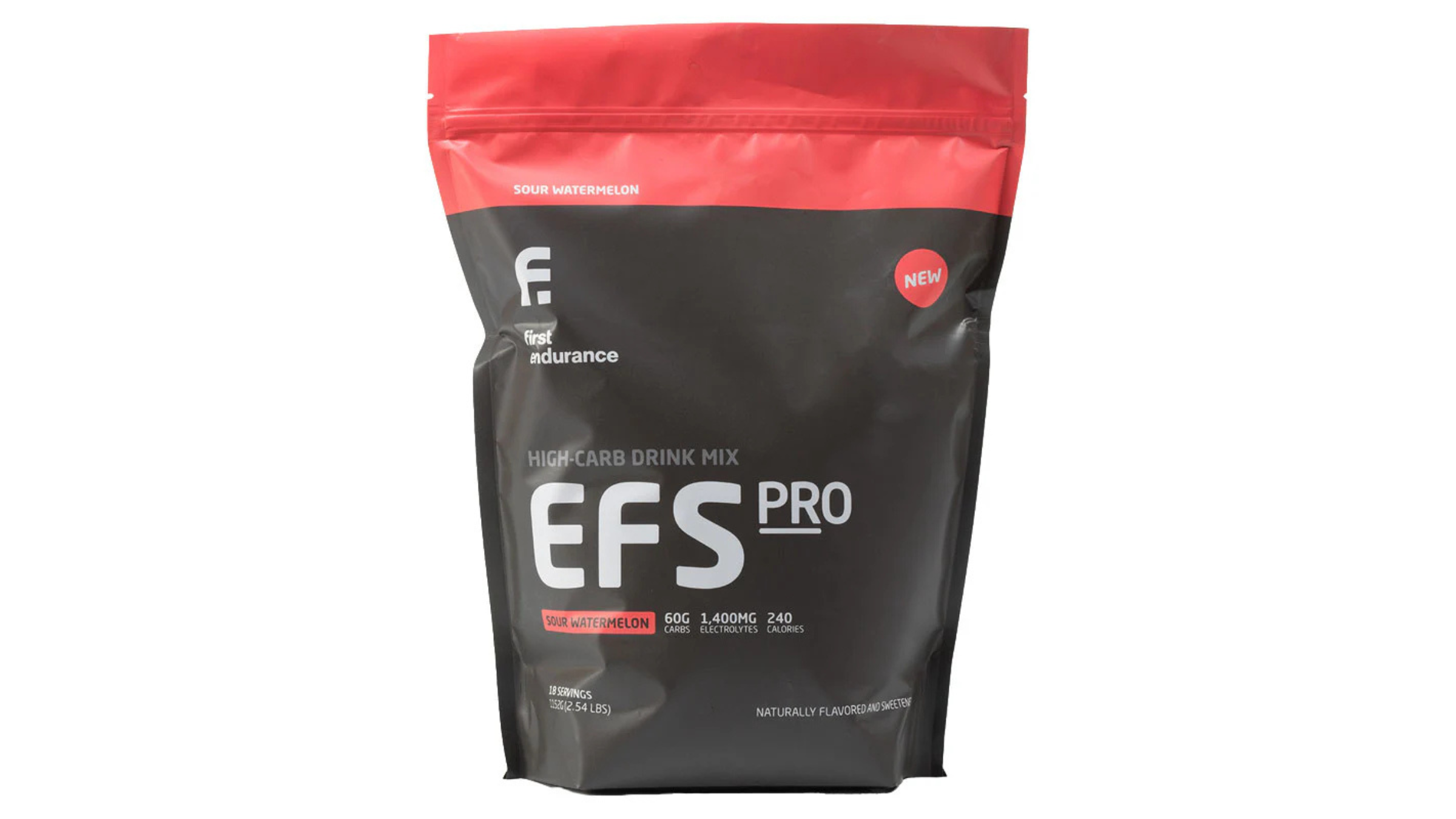
| Serving size (3 scoops) | |
| Calories | 360 |
| Carbs | 90g |
| Fat | 0g |
| Protein | 0g |
| Sodium | 570mg |
Larson says matter-of-factly that taste is a top consideration when choosing what sports drink to go with. “It helps immensely if you enjoy consuming it, especially during heavy exercise.” Good thing that the modest sweet-tart flavor of this drink mix is spot on. Even if using 4 scoops to bump things up to 120 grams of carbs in a bottle, it won’t be overpowering. The drink mix is isotonically balanced making it easy to digest and quickly assimilated into the bloodstream and then onward to working muscles.
It’s one of the few drink mixes to use cluster dextrin as a primary carb source. This has a unique molecular structure that allows it to pass through the stomach into the small intestine fairly quickly, which may improve tolerance compared to other carbohydrate sources. However, in my experience, powders made with cluster dextrin don’t dissolve as well and require a fair amount of shaking. The five key electrolytes – sodium, chloride, magnesium, potassium, and calcium – are in the mix, too.
Section dividerNeversecond C90 High Carb Drink Mix
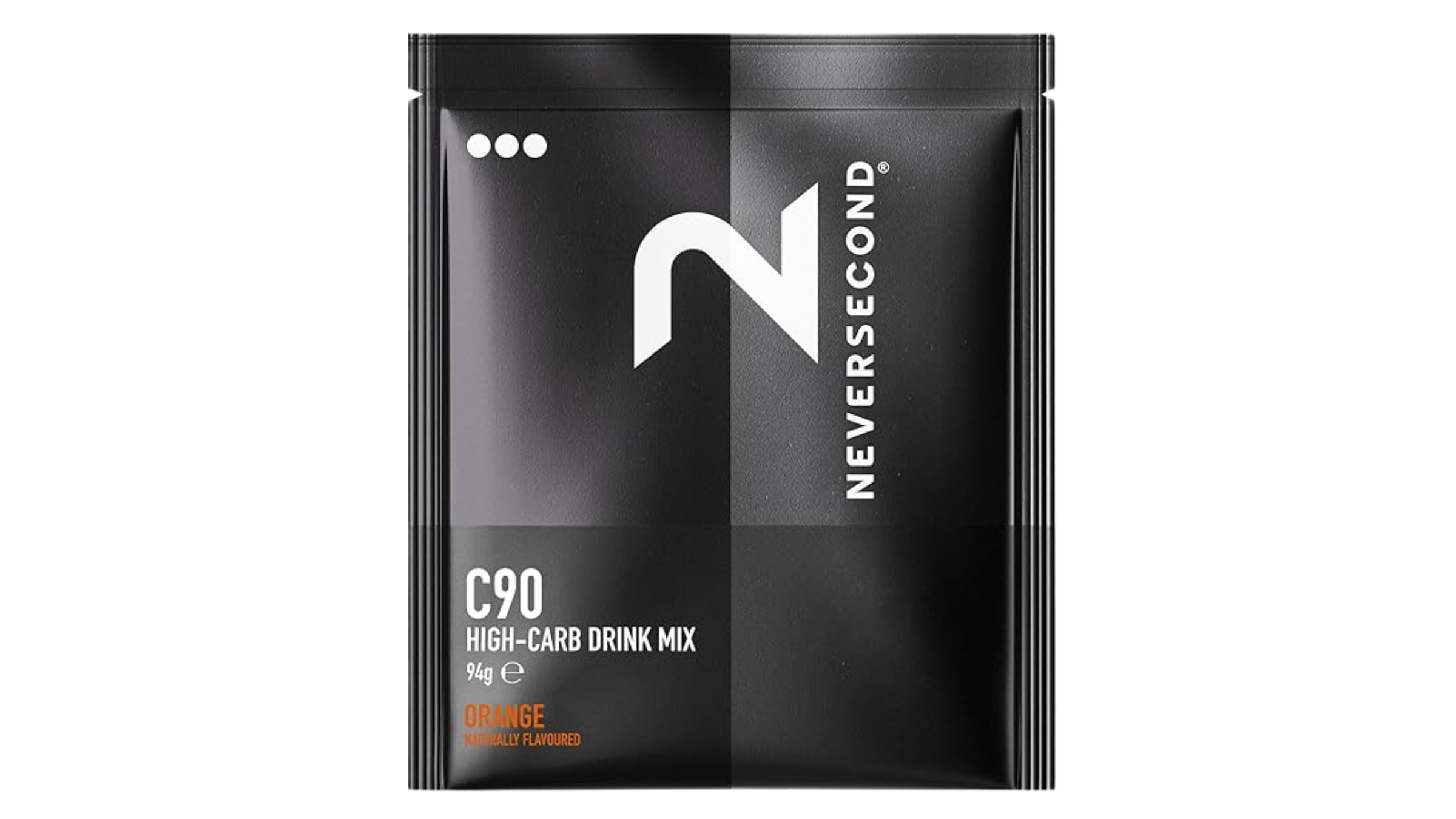
| Serving size (1 packet) | |
| Calories | 360 |
| Carbs | 90g |
| Fat | 0g |
| Protein | 0g |
| Sodium | 200mg |
Neversecond’s mildly flavored super high-carb sport drink mix provides a mammoth 90g of carbs per packet (hence the product title C90), hailing from maltodextrin and fructose in a ratio that should improve digestion and absorption. After all, if you are going to spike your bidon with a deluge of carbs, you want to make sure it won’t send you running to the nearest bush for a modicum of privacy. Being pH-neutral should also make the drink easier on the gut. Users are instructed to mix the carb-rich powder with 500 or 750ml of water, with the latter arguably providing an easier swallow. Some will find the sodium level (200mg) a little light, so it can be spiked with an electrolyte booster if desired to get levels up.
Section dividerTailwind High Carb Fuel Lemonade
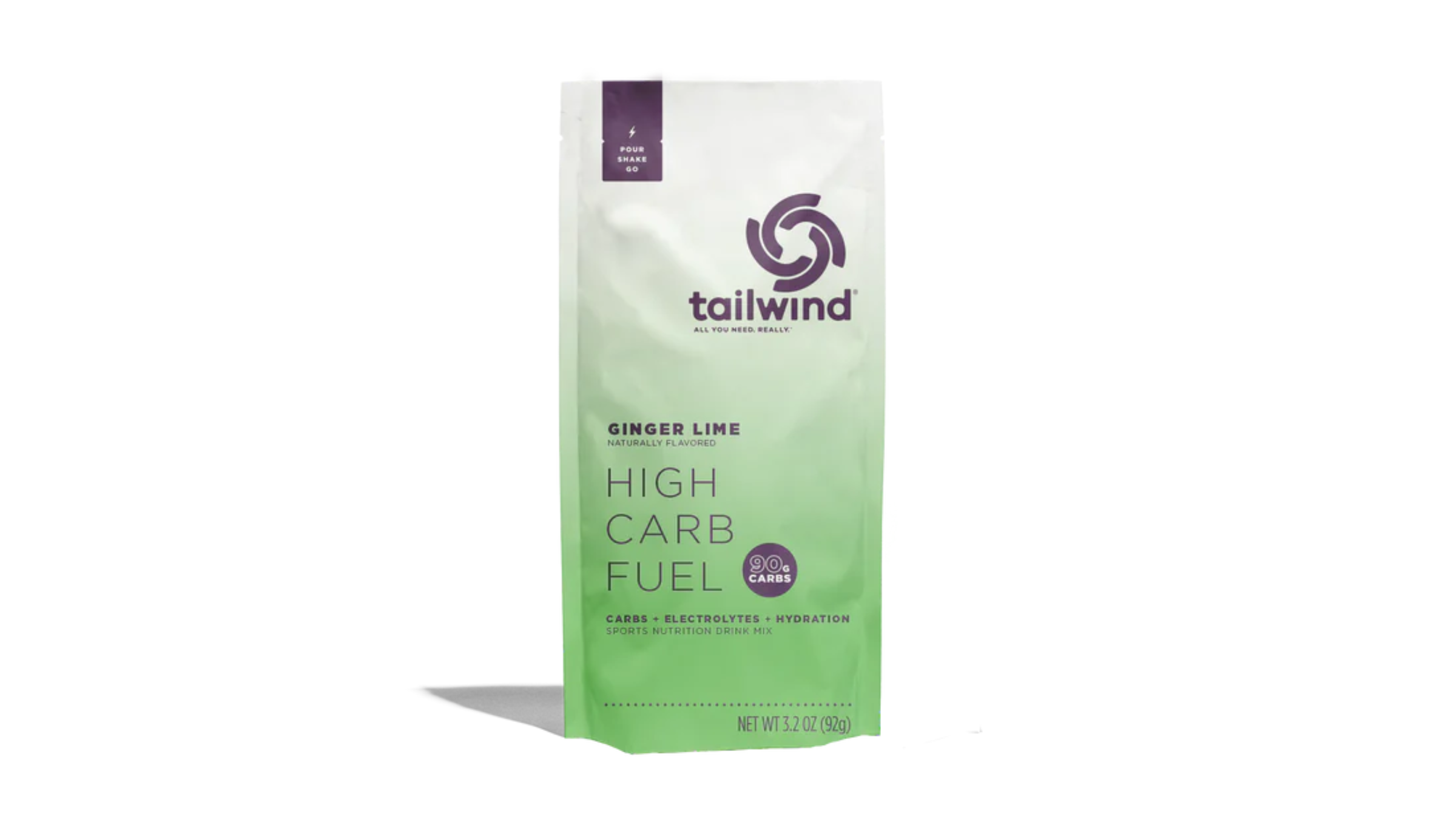
| Serving size (1 packet) | |
| Calories | 360 |
| Carbs | 90g |
| Fat | 0g |
| Protein | 0g |
| Sodium | 680mg |
Here’s another powder that supplies a hefty 90 grams of carbs in a serving. And in a flavor that smacks of summer. Importantly, the powder dissolves well with a bit of vigorous shaking so you aren’t left trying to gulp back a sugary sludge. Dissolvability is tough to solve when it comes to higher-carb powders.
Maltodextrin, dextrose, and fructose provide the necessary fast-acting carbs to help you keep pushing a hero pace. Instructions say to mix the powder with 16 to 24 oz of water and sip this over one hour of activity. I like that the brand gives you a gut-training strategy to help build up tolerance:
- Week one, try consuming one packet over 90 minutes
- Week two, one packet every 80 minutes
- Week three, one packet over 70 minutes
- Finally, go big with the 90g of carbs in 60 minutes.
The 680 mg of sodium and 190 mg of potassium are more than what I have seen in many other high-carb sports drink mixes, which can be beneficial for extra sweaty athletes or when any of us is working out in sultry conditions.
“Some athletes have very high sodium losses through their sweat and may want to select a high-carb drink mix that will better help replenish electrolyte losses,” says Larson.
Section dividerInfinit Premium Fructose Fuel
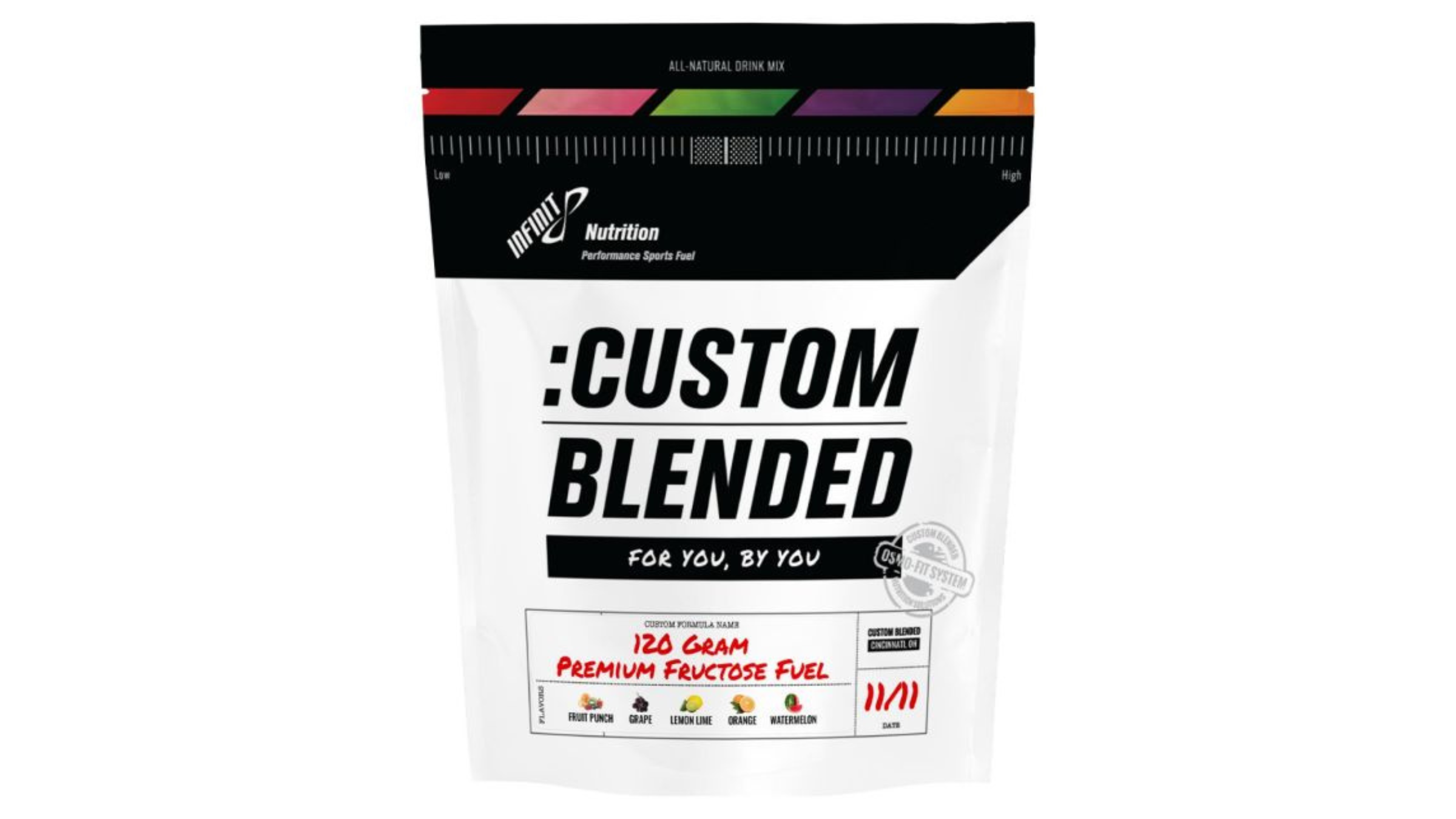
| Serving size (2 scoops) | |
| Calories | 477 |
| Carbs | 120g |
| Fat | 0g |
| Protein | 0g |
| Sodium | 400mg |
If you are looking to mega-dose with carbs for an important race or training session, this powder can lend a big assist with that goal. Dump 2 scoops into your bottle, and you’ll get a whopping 120 grams of carbs from maltodextrin, fructose, cane sugar, and dextrose.
The 2:1 glucose-to-fructose ratio is believed to improve absorption rates, but the exact ratio that is best is still up for debate. A nice perk is that when shopping for the powder, you can select how much sodium (400 to 600mg) and the level of caffeine (0 to 100mg) you want, along with a choice of five different flavors. It’s a brand that prides itself on customization. A more modest 90g carb mix is also available. The multi-serving package cuts down on waste.
Section dividerMaurten Drink Mix 320 Caf 100
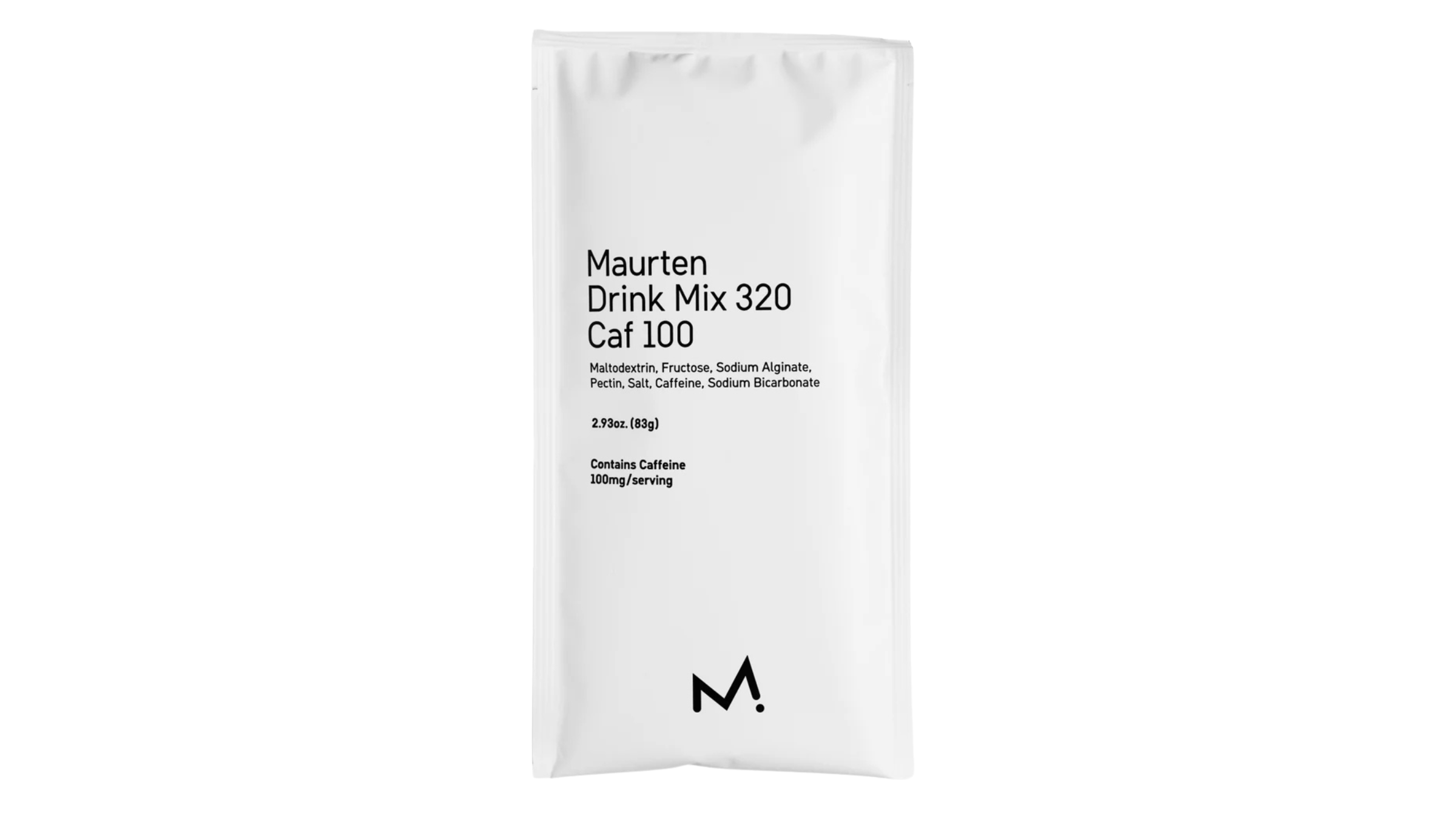
| Serving size (1 packet) | |
| Calories | 320 |
| Carbs | 80g |
| Fat | 0g |
| Protein | 0g |
| Sodium | 245mg |
Maurten contains two ingredients – alginate (from brown algae) and pectin (from fruit) – that turn the drink into a hydrogel when it reaches the stomach’s acidic environment. Research has shown that this can speed up stomach emptying of the carbs, which appears to do away with GI problems while enhancing energy delivery to working muscles. That is a win-win and why this carb-lofty drink mix is a favorite among many pro athletes who have a lot to lose by not crossing the line first or breaking existing records.
This option also offers up 100mg of caffeine, which is enough to put a little extra zip in your stride and make your workout seem less arduous. The newer formula contains sodium bicarbonate, which helps to maintain a neutral pH, making the drink less damaging to your dental health. While the brand has worked to make the drink less thick in texture, it still needs a good amount of shaking with water. It’s also among the most expensive fuel options on the market, so not an everyday option for most of us less financially flexible athletes.
